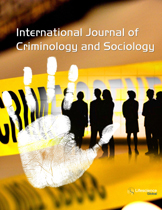ijcs
Abstract : Violence and Public Safety as a Democratic Simulacrum in Brazil
|
|
Abstract: This paper analyzes actions taken by eight special programs for homicide reduction implemented in the states of Bahia, Ceará, Espírito Santo, Minas Gerais, Pernambuco, Rio de Janeiro and São Paulo, as well as the Brazilian Federal District. It aims to understand the historical permanence of lethal violence as one of the most striking social characteristics of Brazil and defends the argument that the prevention and tackling of homicides – understood in a broad sense that includes all intentional violent deaths – are operated, both politically and institutionally, from a symbolic simulacrum that causes incremental initiatives to fail to reach the architecture of criminal justice and public security institutions. As structural reforms in the criminal justice and public security system face several obstacles to being approved by the Legislative Branch, this simulacrum makes the police force and other institutions belonging to the system to continue operating from a center of criminal policies that do not depend on the construction of a democratic project of public security, protection of life or civil and human rights. The study reiterates that the debate on transparency and data quality can allow actions to strengthen institutional capacity for monitoring and evaluation and/or strategic litigation, which in turn may weaken of the path dependence and worldviews that operate the identified simulacrum. In other words, the debate on transparency and data quality is one of the strongest battlefronts for the reduction of violence and for the democratization of public safety in Brazil. Keywords: Violence, Homicides, Simulacrum, Public safety in Brazil. |
Abstract : Construction and Deconstruction of a Homicide Reduction Policy: The Case of Pact for Life in Pernambuco, Brazil
|
|
Abstract: This paper tries to demonstrate that both the fall in homicides in Pernambuco (from 2007-2013) and the resurgence in them that followed (2014-2017) are fundamentally linked to two explanatory variables, which are in turn connected: the model of governance of public security produced in Pernambuco at the level of state government strategy and the capacity for deterrence produced in the framework of the Criminal Justice System (especially that of state police, who are under the responsibility and “control” of the executive power of the state). This article argues that the construction of this specific model of governance of Public Security and the definition, monitoring and realization of deterrence strategies within the police were crucial to the reduction of the number of homicides in the most violent areas of the state. On the other hand, the dissolution of the capacity for integrated governance of the police, with the consequent dismantling of the deterrence capacity aimed primarily at the reduction of homicides and crimes against life that had been successfully conceived and realized between 2007 and 2013, explains the increase in intentional violent crimes that has been observed since 2014. Keywords: Reduction and Resurgence of Homicides, Governance, Deterrence, Pact for Life, Public Security. |
Abstract : Some Conceptual Basis for Crime Prevention in Brazil and USA: Generic Public Policies and Control Crime Programs
|
|
Abstract: This paper is a comparison in crime prevention between Brazil and United States, specially regarding the role of local programs vis a vis generic social policies. In Brazil, there is a tendency to design more generic strategies of crime control. In USA, there is a style of using a more specific approaches. These differences have implication on the evaluations on crime prevention made in each country Keywords: Crime prevention, public policies in crime control, Brazil crime prevention, United States crime prevention. |
Abstract : The Origin of White Collar Criminality? – Exploring a Gene x Environment Interaction Hypothesis
|
|
Abstract: The aim for this article is the elementary question: why does white collar criminals become white collar criminals? The answer is a hypothetical syllogistic constructed hypothesis for further empirical exploration in the agenda. The hypothesis takes its point of departure in biosocial criminology, especially the gene-environment interplay, focused on white collar criminality. The hypothesis proposes a link between criminal attitudes and criminal behavior based on how biological (e.g. intergenerational heredity, MAO-A), neurological (e.g. executive functioning, cortical thickness) and social-psychological/sociological factors (e.g. peer-group, rationalizations, social stress, loss of class status) correlates to each other as a system of mechanisms. Keywords: White collar crime, biosocial criminology, mechanisms, formal logic. |






















